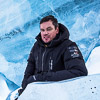The Art of Freezing Motion
One of the unique benefits of still photography is its ability to "freeze" time. Rapid events that last only fractions of a second can be captured as single moments, often revealing details that the eye cannot catch in real time or that are hard to see in moving images.
 | Text & Photo by Ole J Liodden Last updated: 24.04 2025 |
Choose a Fast shutter speed
To effectively freeze fast-moving subjects, it's crucial to use a fast shutter speed. The ideal shutter speed will vary depending on the situation, but a shutter speed of around 1/1600 second is a good starting point, as it will freeze most movements. For very fast action, such as birds in flight, a shutter speed faster than 1/2000 second may be necessary.

Arctic tern © Ole J Liodden
200-600mm, 1/2500 sec, f/6,3, ISO 400
Focus on the Eye
When photographing animals, birds, or people, focus on the eyes. Many modern cameras have advanced and reliable autofocus (AF) systems with eye-tracking, which helps maintain sharpness exactly where it's needed. Make sure your AF settings are optimised for this type of capture.

Rockhopper penguin © Ole J Liodden
600mm, 1/4000 sec, f/8,0, ISO 1250
Centering the subject
Positioning the subject centrally can be beneficial for tracking fast movement. Adjustments and cropping (rule of thirds etc.) can be made in post-processing to enhance composition.

Grizzly bear © Ole J Liodden
600mm, 1/2500 sec, f/5,6, ISO 640, ISO 1250
Background Consideration
A simple, clear background helps emphasise the frozen action, reducing distractions and assisting the AF system in locking onto the subject.

Hummingbird in Ecuador © Ole J Liodden
300mm, 1/4000 sec, f/8,0, ISO 2000
Depth of Field
A shallow depth of field (f/5.6 or lower) can further isolate the subject by blurring the background. Additionally, this enables faster shutter speeds, essential for freezing motion.

Northern Hawk owl © Ole J Liodden
300mm, 1/2000 sec, f/5,6, ISO 4000
Using Flash
A flash can enhance sharpness by freezing movement, particularly useful in low-light situations. When using slower shutter speeds (below 1/250 second), set the flash to rear-curtain sync to capture motion more naturally. Be mindful, however, that some animals - especially nocturnal birds and mammals - are sensitive to bright light and may react negatively to a flash.

Hummingbird in Ecuador © Ole J Liodden
300mm, 1/80 sec, f/13, ISO 200
Visual Impact of Freezing Motion
The visual expression achieved by freezing motion conveys energy, detail, and often a sense of immediacy. Every small detail - such as water droplets, feathers, or the angle of a moving body part - enhances storytelling depth and dramatic effect, allowing viewers to see things the human eye would typically miss due to the speed of movement.
WildPhoto Travel is a leading photo expedition company - specialized in polar regions. Since 2006, we have offered great photo opportunities for our guests and partners.


